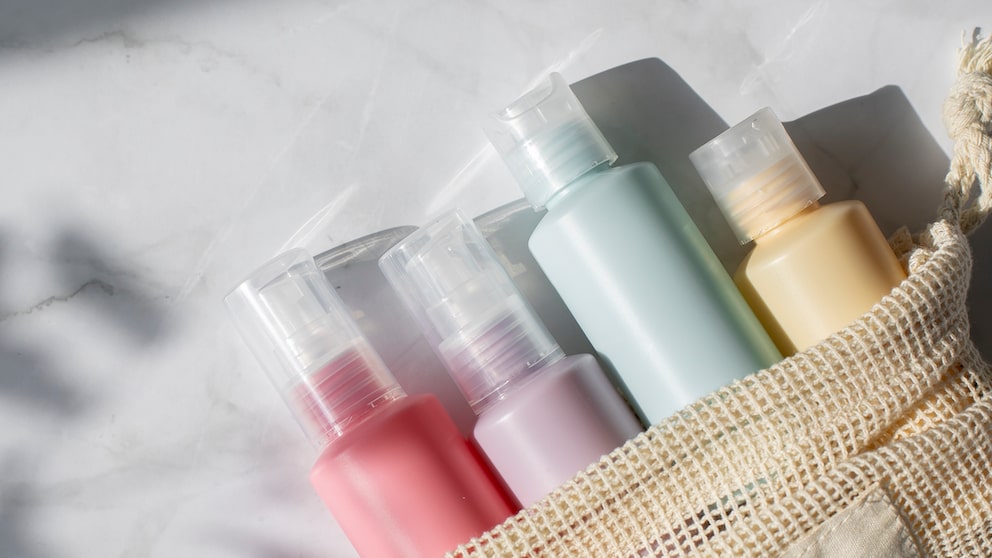October 16, 2024, 6:37 pm | Read time: 5 minutes
The selection of hair care products is huge, but how do I really get split ends, limp curls, or a dry scalp under control? STYLEBOOK has done some research and asked experts how to find the right shampoo for your individual needs.
Dyeing, blow-drying, combing, brushing, styling – things that attack our hair and can even damage it in the long term. Factors such as environmental influences, stress, and the wrong diet can also play a role. Berlin hairdresser Michael Manthei and Munich dermatologist Dr. med. Timm Golüke explain how to use the right shampoo for every hair type and what to look out for when buying one.
Overview
“The primary goal of washing your hair is to cleanse it,” says hair professional Manthei, adding that intensive treatments and hair serums are essential for more extensive care needs. Nevertheless, hair can be “steered in the right direction” with the right care when washing – and according to expert Manthei, you should definitely do this. “In some cases, it even makes sense to use different products for individual sections of hair, i.e., at the roots and in the lengths and ends.”
1. Dry hair needs mild care
If your hair is prone to being straw-like and damaged, opting for a shampoo designed for dry hair is a wise choice – at least initially. It contains fewer surfactants, which are used as foaming agents in conventional shampoos but dry out the hair. Instead, it cleanses the hair in a milder way, for example, with coconut essences, and provides it with moisturizing substances. This better compensates for the lack of moisture and oil, which may be caused by insufficient sebum production on the scalp and/or exacerbated by external factors (dry heating air, chlorinated water, coloring, etc.). “If your hair is extremely dry and shaggy, the right shampoo is not enough,” explains Michael Manthei. “You should regularly use intensive treatments after washing your hair instead of a simple conditioner.”
2. Tea tree oil soothes oily hair
Overactive sebaceous glands on the scalp can lead to hair becoming greasy, sometimes just hours after washing. Sebaceous gland function is genetically determined and can be influenced by other factors (hormonal fluctuations, stress, etc.). Shampoos with an “astringent” effect that reduces sebum production at the roots of the hair are targeted at this problem; herbal additives such as tea tree oil, lemon balm, or rosemary soothe the scalp. Extreme cases of hardship should be treated in a similar way to acne. “One can prescribe isotretinoin for a period of three months, which shrinks the sebaceous glands,” says Dr. Golüke.
3. Which shampoo does the curly hair type need?
Curly hair often comes with the challenge of split ends and an overall frizzy appearance. The reason for this is that the hair “bounces” and, therefore, doesn’t lie as well on the scalp. As a result, it hardly comes into contact with the sebum produced there, which would make it supple, and the natural curvature of the hair means that the cuticle layer tends to rub against it. For a smooth surface and a beautiful curl, it is, therefore, best to use shampoo for damaged hair – the silicones it contains fill in the cracked areas and ensure a certain heaviness and corresponding taming. Curly hair, in particular, should be treated with care. Rough rubbing dry with a towel or knotting will cause lasting damage to the hair structure.
4. Fine hair needs mild care
Each strand of hair is coated with numerous keratin plates, similar to the scales of a pine cone. If this keratin layer is naturally missing, even volumizing shampoos cannot fundamentally change anything. However, thanks to their composition, they do provide more grip and hold. “Volumizing shampoos make the hair lighter,” explains expert Manthei. They also prevent static build-up. Of course, fine hair can also be brittle and damaged in the mid-lengths, especially at the ends. Suitable care helps to combat this, even if it can have an aggravating effect.
“Never apply conditioner to the roots,” advises Manthei, “only distribute it to the lengths and ends.” Do you want more volume, but unfortunately, your hair is dull and lackluster? Hairdresser Manthei knows the solution here, too. “Use a volumizing shampoo at the roots so that your hair doesn’t lie so flat on your head, and use one on the lengths for more shine.”

Causes and home remedies This helps with dry scalp that itches and flakes

Color your hair, but do it right What you should always bear in mind when bleaching your hair at home

"Liquid gold" The advantages and disadvantages of baobab oil in skincare
5. Shampoo for every hair type – urea helps with dandruff
As a rule, dandruff that settles in the hair or trickles unsightly onto the shoulders is caused by an oily scalp, but sometimes it can also be caused by yeast. In this case, the usual anti-dandruff shampoos, which often contain the appropriate active ingredients, work reliably.
Many people suffer from extremely dry, sensitive scalps, which are practically chafed by irritation. The usual anti-dandruff shampoos, which have an almost exfoliating effect, would only exacerbate the problem of dry dandruff. “Mild shampoos should be used here, preferably with added urea or glycerine, which soothe the scalp instead of irritating it,” advises Dr. Golüke. Baby shampoos are also recommended. Once the dry or oily dandruff has been treated accordingly, the problem should have improved significantly within one to two weeks. If this is not the case, it is advisable to consult a specialist. Because: “Sensitivity reactions on the scalp are often triggered by allergies,” says dermatologist Golüke.
Tip: There’s no need to shy away from supermarket shampoos for various hair types! They are not necessarily worse than the expensive ones from specialist shops; the experts confirm – as long as they are tailored to individual hair needs.

